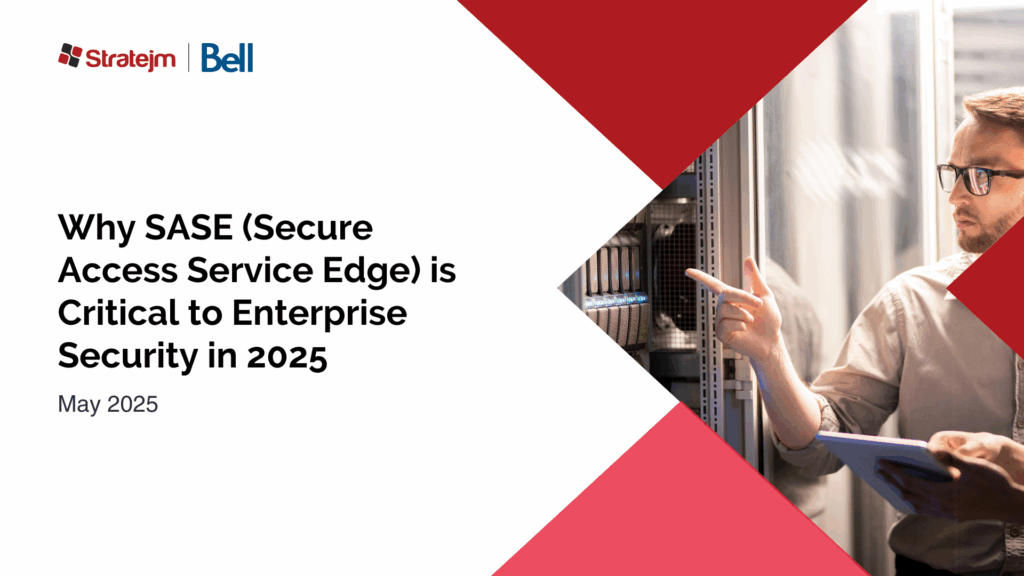 In 2025, enterprise networks are more distributed, user access is more dynamic, and threats are more sophisticated than ever. The traditional notion of a secure, centralized perimeter has not just eroded—it’s obsolete. In its place, a new security architecture has emerged: SASE, or Secure Access Service Edge.
In 2025, enterprise networks are more distributed, user access is more dynamic, and threats are more sophisticated than ever. The traditional notion of a secure, centralized perimeter has not just eroded—it’s obsolete. In its place, a new security architecture has emerged: SASE, or Secure Access Service Edge.
Introduced by Gartner in 2019, SASE has moved from buzzword to business-critical, as organizations shift toward hybrid work, cloud-native infrastructures, and zero trust security models. In this blog, we explore what SASE is, why it matters in 2025, and how forward-thinking security leaders are using it to modernize and secure their digital enterprises.
What is SASE?
Secure Access Service Edge (SASE) is a cloud-delivered security and networking architecture that converges:
-
Wide Area Networking (WAN) capabilities, such as SD-WAN
-
Security services, including:
-
Secure Web Gateway (SWG)
-
Cloud Access Security Broker (CASB)
-
Zero Trust Network Access (ZTNA)
-
Firewall-as-a-Service (FWaaS)
-
Data Loss Prevention (DLP)
-
This convergence enables organizations to securely connect any user, device, or branch to any application—regardless of location—through a unified cloud platform.
In short: SASE brings networking and security together at the edge, reducing complexity, improving visibility, and enabling secure, scalable digital transformation.
Why SASE is Crucial in 2025
1. The Perimeter Is Everywhere
In the age of hybrid work and SaaS sprawl, the “enterprise perimeter” is now a blend of:
-
Remote employees
-
Cloud-hosted apps (SaaS/IaaS)
-
Branch offices
-
Third-party access
-
BYOD and unmanaged devices
Traditional, hub-and-spoke security models can’t scale to cover this sprawl. SASE delivers security and performance directly at the edge, where users and devices operate.
According to Gartner, by 2025, at least 60% of enterprises will have explicit strategies and timelines for SASE adoption, up from 10% in 2020.
2. Zero Trust Requires Continuous Context
The Zero Trust model—“never trust, always verify”—relies on constant evaluation of user, device, and application context. SASE enables this by integrating ZTNA with identity-aware, policy-driven access controls that adapt in real time.
In 2025, where insider threats and lateral movement are top concerns, SASE acts as a Zero Trust enabler that reduces reliance on VPNs and static trust relationships.
3. Cloud-Native Architecture Demands Cloud-Native Security
With enterprises running workloads across AWS, Azure, Google Cloud, and multi-cloud environments, security must match the agility and elasticity of the cloud. SASE platforms are born in the cloud, built to scale elastically, and deploy globally.
Unlike legacy appliances or patchwork solutions, SASE delivers uniform security policies across geographies and workloads, helping organizations maintain governance, compliance, and resilience.
4. Threats Are Faster—Response Must Be Too
From ransomware-as-a-service to AI-powered phishing kits, attackers in 2025 are using automation, social engineering, and stealth to breach organizations faster than ever.
SASE architectures support real-time threat detection, inline enforcement, and automated policy responses at the edge—before traffic reaches sensitive applications or data.
Zscaler’s 2024 ThreatLabz report found that organizations with distributed, cloud-delivered security policies (a core SASE principle) experienced 70% faster response times and 45% fewer successful breaches.
SASE in Practice: Real-World Use Cases
-
Hybrid Workforce Enablement: Replace legacy VPNs with ZTNA for seamless, secure access to apps from anywhere.
-
Cloud Application Protection: Gain visibility and control over shadow IT and data sharing in Microsoft 365, Google Workspace, Salesforce, etc.
-
Branch Office Simplification: Use SD-WAN + SASE to cut MPLS costs, centralize security, and accelerate application performance.
-
Compliance Readiness: Enforce consistent data loss prevention (DLP), threat protection, and audit logging across distributed users and workloads.
How to Get Started with SASE in 2025
SASE is not a single product—it’s an architecture and strategy. To get started:
-
Assess your current state: Identify gaps in cloud security, remote access, and user experience.
-
Unify networking and security teams: Break down silos to align infrastructure, policy, and access controls.
-
Choose the right partner: Look for providers with global presence, integrated platforms, and zero trust expertise.
-
Start with high-impact use cases: Remote work, cloud app access, or M&A integration are excellent pilot areas.
Stratejm + Bell: Enabling Secure Access at Scale
As Canada’s leading cybersecurity and managed services partner, Stratejm + Bell helps enterprises adopt the SASE model with clarity and confidence. Our approach includes:
-
Expert design and implementation of SASE-aligned architectures
-
24/7 security operations and real-time policy enforcement
-
Full-stack visibility from edge to cloud
-
Zero Trust alignment with identity and threat context built in
Whether you’re beginning your SASE journey or expanding an existing deployment, Stratejm + Bell brings the technical expertise, automation, and threat intelligence to help you scale securely—anywhere your business operates.
Contact us today to get started
Sources:
-
Gartner: Market Guide for SASE, 2024
-
Zscaler ThreatLabz: State of Cloud Security Report, 2024
-
Palo Alto Networks: SASE Adoption Trends and Benefits, 2023
-
Cisco: The Future of Secure Connectivity, 2024

